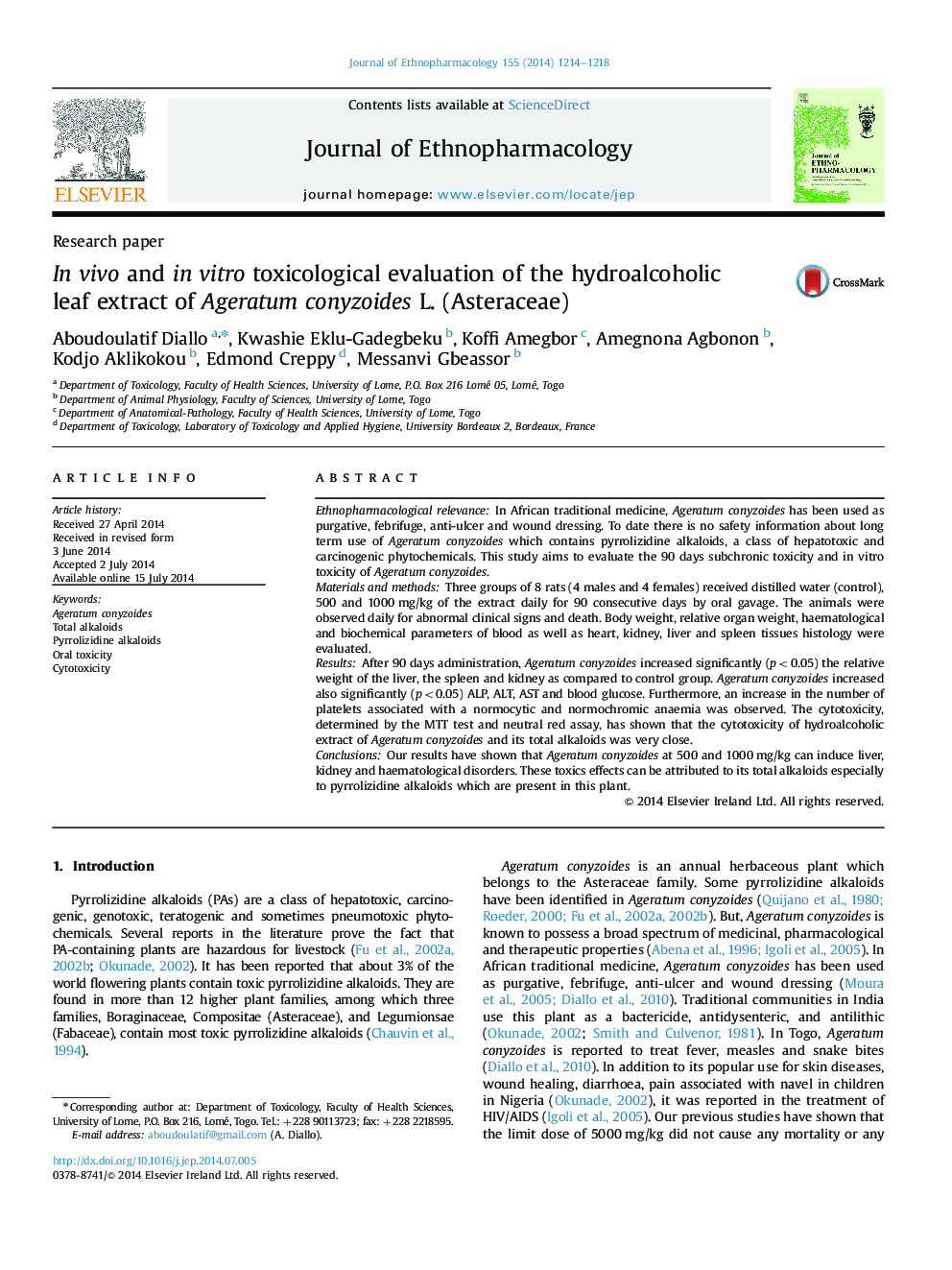| کد مقاله | کد نشریه | سال انتشار | مقاله انگلیسی | نسخه تمام متن |
|---|---|---|---|---|
| 5836105 | 1123938 | 2014 | 5 صفحه PDF | دانلود رایگان |

Ethnopharmacological relevanceIn African traditional medicine, Ageratum conyzoides has been used as purgative, febrifuge, anti-ulcer and wound dressing. To date there is no safety information about long term use of Ageratum conyzoides which contains pyrrolizidine alkaloids, a class of hepatotoxic and carcinogenic phytochemicals. This study aims to evaluate the 90 days subchronic toxicity and in vitro toxicity of Ageratum conyzoides.Materials and methodsThree groups of 8 rats (4 males and 4 females) received distilled water (control), 500 and 1000Â mg/kg of the extract daily for 90 consecutive days by oral gavage. The animals were observed daily for abnormal clinical signs and death. Body weight, relative organ weight, haematological and biochemical parameters of blood as well as heart, kidney, liver and spleen tissues histology were evaluated.ResultsAfter 90 days administration, Ageratum conyzoides increased significantly (p<0.05) the relative weight of the liver, the spleen and kidney as compared to control group. Ageratum conyzoides increased also significantly (p<0.05) ALP, ALT, AST and blood glucose. Furthermore, an increase in the number of platelets associated with a normocytic and normochromic anaemia was observed. The cytotoxicity, determined by the MTT test and neutral red assay, has shown that the cytotoxicity of hydroalcoholic extract of Ageratum conyzoides and its total alkaloids was very close.ConclusionsOur results have shown that Ageratum conyzoides at 500 and 1000Â mg/kg can induce liver, kidney and haematological disorders. These toxics effects can be attributed to its total alkaloids especially to pyrrolizidine alkaloids which are present in this plant.
150
Journal: Journal of Ethnopharmacology - Volume 155, Issue 2, 11 September 2014, Pages 1214-1218